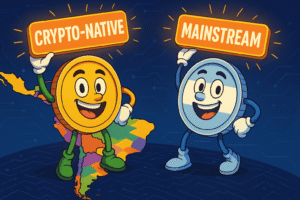Metaverse Security: Ensuring Privacy and Safety in a Borderless Digital World

Metaverse Security: Ensuring Privacy and Safety in a Borderless Digital World
In recent years, the concept of the metaverse has gained significant attention in the tech industry. The metaverse is a virtual space where people can interact with each other in a digital world. It’s a new frontier in the digital landscape, offering unprecedented opportunities for people to connect, collaborate, and create. However, the metaverse also presents unique challenges when it comes to security and privacy. In this article, we’ll explore the importance of metaverse security and the steps we can take to ensure privacy and safety in this borderless digital world.
What is the Metaverse?
Neal Stephenson first coined the term metaverse in his 1992 novel, Snow Crash. The concept has since evolved to describe a collective virtual shared space created by the convergence of physical and virtual reality. The metaverse is essentially a 3D virtual world where users can interact with each other in real time. Think of it as a giant video game that people can enter and leave at will, with no limitations on what they can do or where they can go.
The Importance of Metaverse Security
The metaverse presents a unique challenge when it comes to security and privacy. In this virtual space, users can create their own identities, interact with others, and even conduct transactions using virtual currency. This means that there is a significant risk of identity theft, fraud, and other forms of cybercrime.
Furthermore, the metaverse is a borderless world, which means that users are not bound by the laws and regulations of any particular country. This creates a regulatory challenge when it comes to enforcing security and privacy standards.
Ensuring Privacy and Safety in Metaverse Security
To ensure privacy and safety in the metaverse, we need to take a multi-faceted approach that addresses both the technological and regulatory challenges.
1. Strong Authentication and Verification Procedures
One of the key challenges in the metaverse is verifying the identity of users. Strong authentication and verification procedures are necessary to ensure that users are who they claim to be. This can include biometric authentication, two-factor authentication, and other methods of identity verification.
2. Encryption and Data Protection
Encryption and data protection are critical to ensure that user data is secure in the metaverse. This includes the use of secure protocols for data transmission, as well as the encryption of data at rest.
3. User Control and Consent
Users must have control over their data and how it is used in the metaverse. This means that platforms must provide users with clear and transparent information about data collection, use, and sharing. Users should also be able to give their consent for their data to be used, and have the ability to revoke that consent at any time.
4. Cybersecurity and Threat Detection
Effective cybersecurity and threat detection are critical to prevent cyberattacks in the metaverse. This can include the use of advanced threat detection technologies, as well as the adoption of best practices in cybersecurity.
5. Regulatory Standards and Frameworks
Regulatory standards and frameworks are necessary to ensure that security and privacy standards are enforced in the metaverse. Governments and regulatory bodies must work together to develop and enforce standards that protect users and prevent cybercrime.
Metaverse Security Challenges
The metaverse is a complex digital ecosystem that presents several challenges when it comes to security and privacy. Here are some of the key challenges that need to be addressed:
1. Centralized Control
One of the biggest concerns with the metaverse is the potential for centralized control. If a single entity or organization controls the virtual world, they can have complete control over user data and interactions. This can lead to issues with privacy and security, as well as censorship and suppression of free speech.
2. Virtual Currency Fraud
Virtual currency is a key component of the metaverse, but it also presents a significant risk of fraud. Hackers can use virtual currency to conduct illegal activities, such as money laundering, tax evasion, and terrorism financing.
3. Malware and Hacking
The metaverse is a prime target for hackers and cybercriminals. Malware can be introduced into the system through malicious downloads, and phishing attacks can be used to steal user credentials and other sensitive information.
4. Identity Theft
Identity theft is a significant concern in the metaverse, as users can create their own virtual identities. If a user’s virtual identity is compromised, it can lead to real-world consequences, such as financial fraud and reputational damage.
5. Inadequate Data Protection
Many metaverse platforms do not have adequate data protection measures in place. This can lead to data breaches and the exposure of sensitive user information.
Metaverse Security Solutions
To address these challenges and ensure the safety and privacy of users in the metaverse, several solutions can be implemented. Here are some of the most effective solutions:
1. Decentralized Control
To prevent centralized control in the metaverse, decentralized technologies can be used. Blockchain technology can be used to create a decentralized platform that is transparent, secure, and resistant to censorship.
2. Secure Virtual Currency
To prevent virtual currency fraud, secure virtual currencies can be developed. These currencies can be designed to be resistant to hacking and fraudulent activities.
3. Advanced Threat Detection
Advanced threat detection technologies, such as machine learning and artificial intelligence, can be used to detect and prevent cyberattacks in the metaverse.
4. User Education and Awareness
Users can be educated and made aware of the potential risks and threats in the metaverse. This can include training on safe online practices, as well as the use of security tools and measures.
5. Robust Data Protection Measures
Metaverse platforms must have robust data protection measures in place to ensure the safety and privacy of user data. This can include the use of encryption, secure protocols, and regular security audits.
The Future of Metaverse Security
The metaverse is still a relatively new concept, and its security and privacy challenges are still being addressed. As the technology continues to evolve, new solutions and approaches will be developed to address these challenges. It is essential to remain vigilant and proactive in ensuring the safety and privacy of users in this borderless digital world.
Conclusion
The metaverse presents exciting opportunities for people to connect and interact in a digital world. However, it also presents unique challenges when it comes to security and privacy. To ensure the safety and privacy of users in the metaverse, a multi-faceted approach must be taken that addresses both the technological and regulatory challenges. By implementing these solutions, we can ensure that the metaverse is a safe and secure place for people to collaborate and create.

I have been in the industry for over 5 years. I know all the latest news and what is going on with different coins. I write about Bitcoin, Ethereum, Litecoin, and more.








